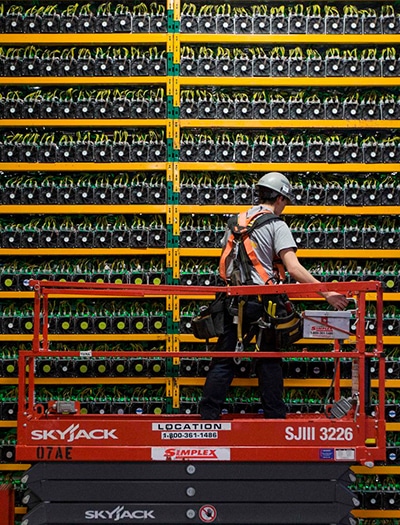0,055€/kWh
8.2047728459933
Bitcoin Mining ist der Prozess, durch den neue Bitcoins generiert werden, und die Bitcoin Mining Difficulty (Mining Schwierigkeit) ist ein entscheidender Faktor in diesem Prozess. In diesem Artikel werden wir die Bitcoin Mining-Schwierigkeit, ihre Bedeutung und ihre Auswirkungen auf die Miner und den gesamten Markt untersuchen.
Die Bitcoin Mining-Schwierigkeit ist ein Maß dafür, wie kompliziert es ist, den Hash für einen neuen Block zu finden. Dieses Maß wird automatisch alle 2016 Blöcke, oder ungefähr alle zwei Wochen, angepasst, um sicherzustellen, dass die durchschnittliche Zeit zwischen den Blöcken 10 Minuten bleibt.
Mit steigender Anzahl an Minern und fortschrittlicher Hardware wird die Aufgabe, einen neuen Block zu finden, immer einfacher. Um dies auszugleichen, erhöht sich die Schwierigkeit, um den Prozess wettbewerbsfähig zu halten. Die kontinuierliche Anpassung der Bitcoin Mining-Schwierigkeit gewährleistet, dass der Mining-Prozess fair bleibt und der Zeitplan für die Blockerzeugung stabil ist.
Die Difficulty des Bitcoin Mining beeinflusst direkt die Profitabilität der Miner. Wenn die Schwierigkeit steigt, werden mehr Ressourcen benötigt, um die gleiche Menge an Bitcoin zu minen. Dies kann dazu führen, dass weniger effiziente Mining-Operationen nicht mehr rentabel sind. Es ist daher von wesentlicher Bedeutung, die aktuellen Trends in der Mining-Schwierigkeit im Auge zu behalten, wenn man im Bitcoin Mining tätig ist oder plant, es zu werden.
Die Bitcoin Mining-Schwierigkeit ist ein komplexes aber grundlegendes Konzept in der Welt des Kryptowährungs-Minings. Durch die automatische Anpassung wird sichergestellt, dass der Prozess wettbewerbsfähig bleibt und die Integrität des Netzwerks aufrechterhalten wird. Egal, ob Sie ein erfahrener Miner oder jemand sind, der daran interessiert ist, in den Bitcoin-Mining-Markt einzusteigen, das Verständnis der Mining-Schwierigkeit ist entscheidend für Ihren Erfolg.
Wenn Sie mehr über Bitcoin Mining erfahren möchten oder auf der Suche nach hochwertiger Bitcoin Mining-Hardware sind, zögern Sie nicht, unsere Experten zu kontaktieren. Wir bieten Ihnen umfassende Lösungen und Unterstützung in der schnelllebigen Welt der Kryptowährungen.
